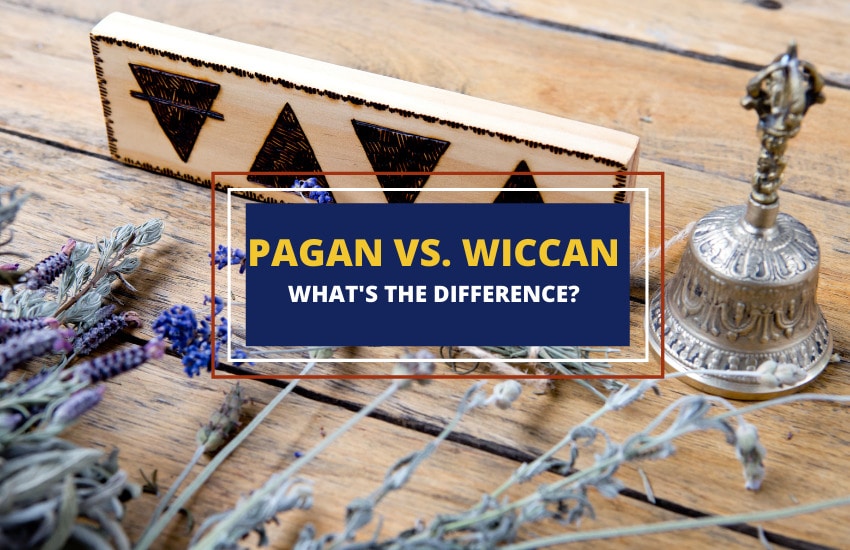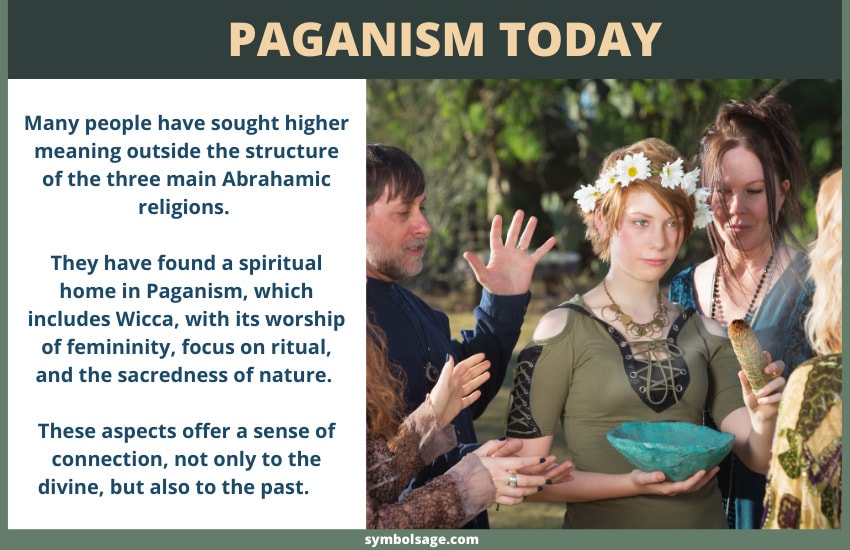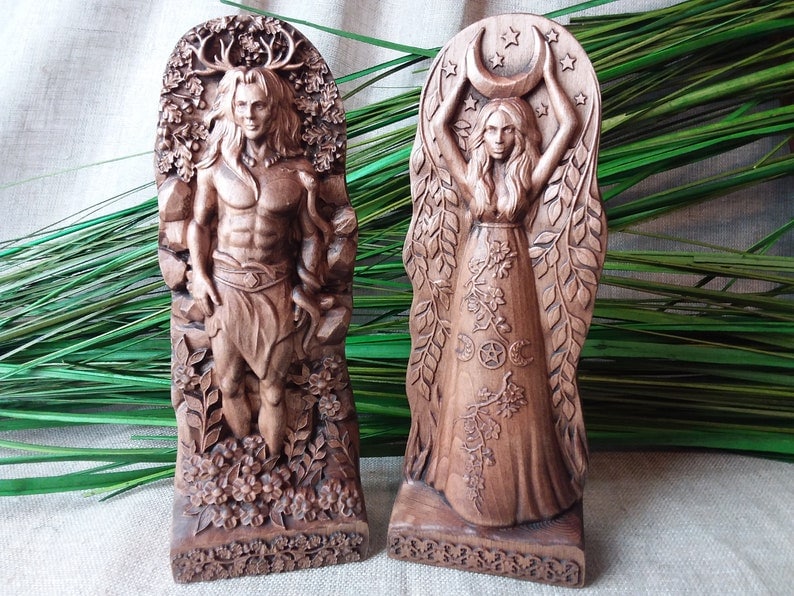
Table of Contents
Recent years have seen an increasing interest in spirituality. Many have sought answers to spiritual questions outside of Abrahamic religions, turning instead to beliefs and rituals with their roots in pre-Christian cultures.
Two of the more common such traditions are Paganism and Wicca. Though they are closely linked, they are not interchangeable words. What are the beliefs of each of these traditions, and how are they related to one another? Here’s a look at the similarities and differences between Wiccan and Paganism.
Paganism
The word “pagan” comes from the Latin word paganus. Its original meaning is rural or rustic. Later it became a term used to refer to everyday citizens. By the 5th century CE, it had become the word used by Christians when referring to non-Christians. How this came to happen is quite the turn of events.
The earliest Church Fathers, such as Tertullian, would speak of ordinary Roman citizens, whether Christian or not, as paganus. As Christianity spread during its first few centuries of existence, its growth was most rapid in the cities of the Roman Empire.
In an intentional strategy, missionaries such as Paul would spend time in the areas with the highest population density. Thus, many epistles of the New Testament are addressed to nascent churches in places such as Thessalonica, Colossae, and Phillippi.
As these cities became hubs of the Christian faith, the rural parts of the empire became known as places where traditional, polytheistic worship persisted. Those who lived in rural areas thus became identified with these old religions. How ironic that Christians went from being the outcasts to viewing themselves as cultured city dwellers all within a few hundred years, while those who maintained traditional faith practices became the “hicks from the sticks,” if you will.

Today pagan and paganism are still used as umbrella terms to refer to traditional non-Abrahamic religions. Some have expressed distaste for the Christo-centric nature of the term’s origin, but its use persists. In reality, every region has a pagan religious tradition.
The Druids were among the Celts in Ireland. The Norse had their gods and goddesses in Scandinavia. The various religious traditions of Native Americans also belong under this umbrella. The practice of these religions today is often referred to as Neo-Paganism. Though they can differ in some of their rituals and festivals, they have some important identifying markers in common.
The first of these common characteristics is polytheism, meaning they believe in multiple deities. There are many ways this finds expression. Some worship a pantheon of deities. Some hold belief in one supreme being and several lesser gods. Often the deities are associated with various elements of the natural world.
It is also common for the belief system to be duotheistic, having a single god and goddess. This worship of the divine feminine or Mother Goddess is another feature shared by pagan religions. She is identified with fertility, nature, beauty, and love. Her male counterpart is the ruler of the cosmos, strength, and war.
The other common feature of pagan religions is finding divinity within all of nature. These earth religions either associate various deities with elements of the earth or believe in panentheism, seeing all the divinity in the universe.
Wicca
Wicca is one of the various pagan religions. It is a set of beliefs taken from multiple ancient religions and coalesced by its British founder Gerald Gardner. Wicca was presented to the public by the publishing of books and pamphlets in the 1940s and 50s.
Originally called the “Craft” by Gardner and his fellow practitioners, it became known as Wicca as it grew, a term taken from the Old English words for witch, both male and female. The use of Wicca in favor of the Craft was a concerted effort to distance the movement from stereotypical views of witches, witchcraft, and magic. However, many adherents of both Wicca and other pagan religions do practice witchcraft. Because of its newness, sociologists identify Wicca as a New Religious Movement (NRM) despite being connected to ancient religious rites.
So, what do the followers of Wicca, Wiccans, believe and practice? This is a difficult question to answer. Though Gardner is recognized as the movement’s founder, the religion itself lacks any centralized authority structure. Because of this, numerous expressions associated with Wicca, but differing in practice and belief, have emerged.
The following is an overview of the basics of Wicca taught by Gardner.

As with other pagan religions, Wicca does worship a god and goddess. These have traditionally been the Horned God and the Mother Goddess. Gardner also taught the existence of a supreme deity or “Prime Mover” who existed above and outside the cosmos.
Unlike in Abrahamic religions, Wicca does not emphasize the afterlife as a central tenet. Yet, many Wiccans follow Gardner’s lead believing in a form of reincarnation. Wicca follows a calendar of festivals, known as Sabbats, borrowed from various European religious traditions. The significant Sabbats include Halloween in the autumn from the Celts, Yuletide in the winter and Ostara in the spring from the Germanic tribes, and Litha or Midsummer, celebrated since Neolithic times.
Wiccans and Pagans – Are They Witches?
This question is often asked of both Wiccans and Pagans. The short answer is yes and no. Many Wiccans do practice magic and spell to harness the various energies of the universe. Pagans view magic this way as well.
For most, this practice is purely positive and hopeful. They practice according to the Wiccan Rede or code. It is sometimes stated in slightly different variations but can be understood by the following eight words: “An ye harm none, do what ye will.” This simple phrase is the basis of Wiccan morality, replacing much more extensive ethical teachings in the Abrahamic religions.
It embodies the freedom to live as one sees fit and the centrality of not harming anyone or anything. Similarly, Wicca has no sacred text per se. Instead, Gardner used what he called his Book of Shadows, which was a compilation of various spiritual and mystical texts.
To Summarize
Not all pagans are Wiccans, and not all Wiccans are witches. Wicca is one religious tradition among many under the umbrella of paganism. Many people have sought higher meaning outside the structure of the three main Abrahamic religions. They have found a spiritual home in paganism with its worship of femininity, focus on ritual, and the sacredness of nature. These aspects offer a sense of connection not only to the divine but also to the past.








